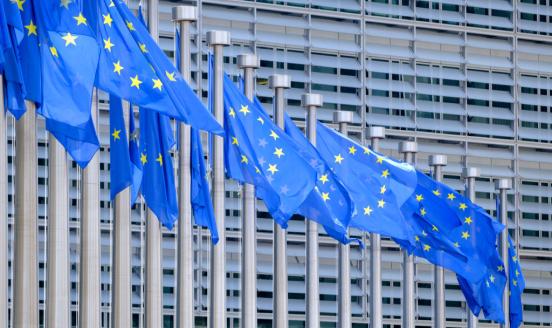Can North Africa's energy challenges become opportunities?
Cooperation in the energy sector could increase economic prosperity and political stability in North Africa and also generate economic opportunities f
It is in Europe’s interest to foster stability, security and prosperity in North Africa. But so far Europe’s attempts to promote economic and political reform in the region have failed. The aftermath of the so-called ‘Arab Spring’ demonstrates the limitations of the EU’s leverage over economic and political developments in North Africa. But it also illustrated that ignoring the region is not an option. Enhanced energy cooperation with selected countries in the region might well be a way to change this scenario.
Economic development is key to stability, security and prosperity. Today, energy is an Achilles heel to economic development of North Africa, and the situation is set to deteriorate. Energy demand in the region is surging.: over the last decade it grew by 4 percent per year (compared to zero growth in OECD Europe). This trend will likely continue due to urbanization and increasing population.
In energy exporting countries, strongly growing domestic demand has already reduced energy exports. Algeria’s gas exports dropped by 40 percent over the last decade, while Egypt (a well-established gas exporter) even became importer in 2014. Such developments badly impacted the countries’ current accounts and fiscal situations. This situation is also exacerbated by the widespread universal energy subsidy schemes. This is clearly exemplified by the case of Egypt: in 2015 energy subsidies constituted a burden of $35 billion on the country's public finances, and this number could quickly rise if oil prices increase again. In 2013 – before oil prices dropped by 65 percent – subsidies in Egypt were, in fact, $45 billion. Just to provide a comparison, the tentative agreement between Egypt and the IMF reached in August 2016 was focused on a loan of $12 billion over three years.
In energy importing countries, strongly growing domestic demand has substantially increased oil and gas import requirements. For instance, Morocco’s gas import requirements doubled over the last decade, while Tunisia’s even tripled. Under these conditions even a modest rise in oil and gas prices could translate into substantial economic turmoil.
However, such a growing energy demand also represents a significant opportunity for investment and sector reform. If North Africa could turn its vast regional renewable energy potential into reality, it would help to meet the increasing energy demand and create employment, and would also release the region’s hydrocarbon resources for profitable export to Europe. If generation capacity were to follow the 4% increase in annual electricity demand, about 2.5 Gigawatt of additional power plant capacities will have to be installed in the five MENA countries every year. A corresponding role-out of photovoltaic installations would have cost in the order of € 3-5 bn.
Given the limited fiscal space in North Africa (all countries currently run fiscal deficits) such sums can only be mobilized by scaling up private investment in the region. In this, Europe might well have a role to play, particularly through its public finance institutions. Long-term public investors such as the European Investment Bank, the European Bank for Reconstruction and Development, Germany's Kreditanstalt für Wiederaufbau, Italy's Cassa Depositi e Prestiti and France's Caisse des Dépôts et Consignations, are already financing renewable energy projects in the region. However, the actions of institutions are not coordinated, and they avoid taking risks and fail to use their leverage to make energy sector overall more attractive to investors. So the impact of their investments is essentially limited to the financing of pilot projects.
The EU should take the political decision to coordinate the North African activities of these public long-term investors, to enable economies of scale and stronger leverage. To facilitate the coordination work, established new Sustainable Energy Fund should be established. The fund could amount to some €3 billion per year – 10 percent of what Europe has promised in annual climate finance.
The mechanism would involve the public long-term investors, governments of interested North African countries, and international energy companies that operate in the region. It would work as follows: i) the public long-term investors would provide risk-mitigation and credit-enhancement tools to cover the country risk faced by international energy companies. This risk might change over time, as the political situation in a country evolves. Reducing the risk can enable the country to attract more investment because of lower interest rates, in effect providing an investment insurance mechanism. ii) International energy companies would take on the commercial risk, to ensure the commercial viability of the projects proposed. iii) The governments of the selected countries would contribute by committing to maintain stable regulatory conditions for the given projects. Should they fail to do so, the banks will discontinue lending – and the EU will exercise some political and economic leverage to ensure repayment of existing obligations.
This mechanism should be able to provide a solid response to the evidence that investors might jump into the North African sustainable energy sector only if a proper risk-adjusted return is considered as guaranteed.
This arrangement would help North African countries to better meet domestic energy demand and thus stimulate economic development. It would also contribute to climate change mitigation. And it would represent a business opportunity for European energy companies, which should be particularly welcome given the sluggish energy outlook within Europe, and given that North Africa is also on the radar of others players, such as Chinese companies, that have the advantage of operating more comfortably in the region due to the financial backing of their government.



